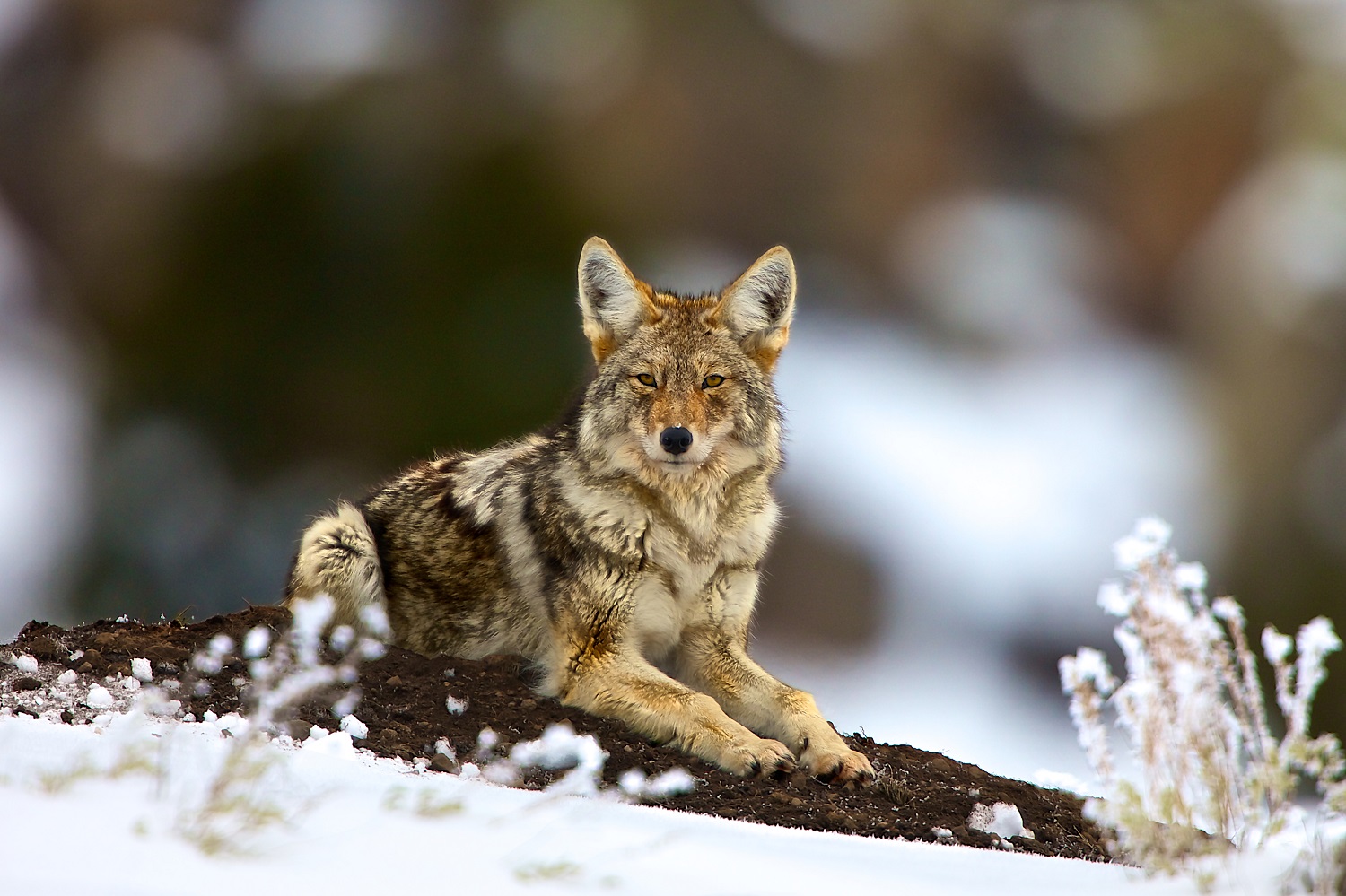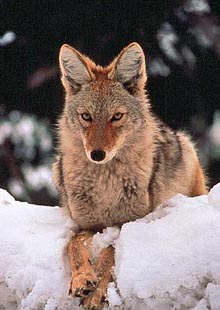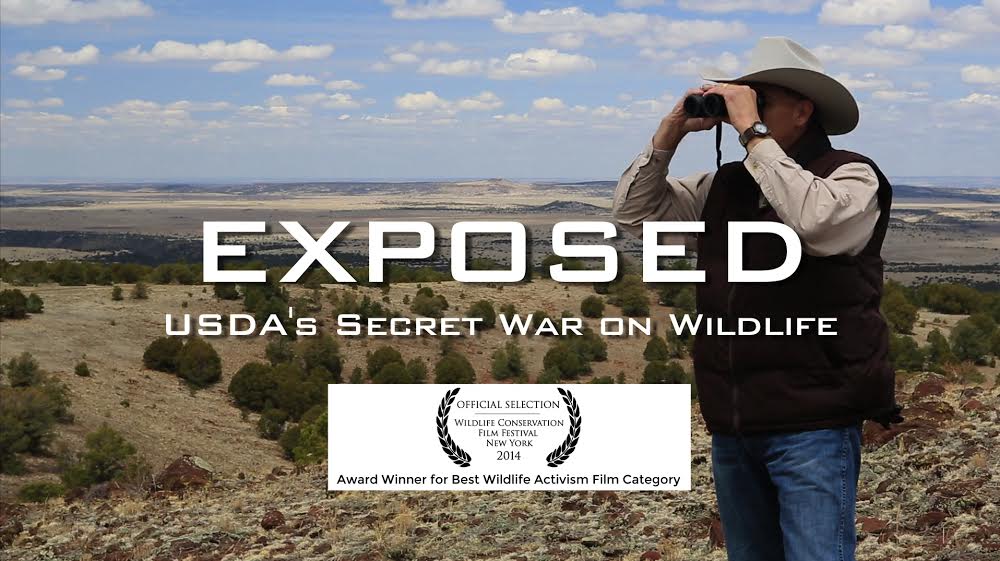Coyotes: Under Seige & Misunderstood
Dog-like in appearance and nature. Monogamous, devoted caregivers. Stunning, intelligent, playful, and affectionate. Coyotes are magnificent animals that are tragically persecuted and historically maligned.

She's One Cool Dog: Overview of the American Coyote
Throughout the world, there are many wild dog species, but North America is home to a very special dog—the coyote! Highly respected by Native Americans, coyotes have held a special place in our history. The Navaho’s sheep and goat herders greatly revered coyotes, and referred to them as “God’s dog.” It wasn’t until white sheep ranchers began running large herds of unprotected sheep that coyotes began to be viewed in an unfavorable light.
Coyotes (canis latrans, which means talking dog) are wild dogs that appear much larger than they really are. They resemble a grizzled German Shepherd, with large, pointed ears and a narrow muzzle. Color varies from grays to red, depending on geographical location, but they uniformly have a black-tipped tail. Typically, western coyotes weigh 25-35 pounds, and coyotes in the northeast weigh up to 45 pounds.
Coyotes are native only to the western two-thirds of the continent, but are currently found throughout North America from Alaska’s arctic regions and as far south as Costa Rica. They live in deserts, prairies, forests, swamps and urban environments. The extreme adaptability of this animal enables them to fill the void left open by the elimination of other larger, more specialized predators such as grizzlies, wolves and mountain lions. Omnivorous by nature, coyotes eat both meat and vegetable matter, although they primarily subsist on rodents and carrion.
Coyotes are pack animals with a social structure similar to wolves. Packs consist of a dominant male and female (alpha pair), and extended family members (betas and omegas). Typically, only the alpha pair breeds, and produces one litter a year. They breed in the months of January through early March, and the gestation period is 62 days. Coyotes give birth in elaborate den sites often created by digging tunnels into hillsides. To protect the pups from infestations of parasites and from being detected by other predators, multiple den sites are used in the raising of a single litter. Pups are born with their eyes closed, and like domestic dogs, open in 10 to 14 days. Litter size varies from 4 to 9 pups, with an average of two pups surviving the first year in unexploited populations (in areas where heavy trapping and hunting does not occur). Pups succumb to predation, disease, weather, and other natural causes.
Coyote territories are best described as circular areas. Den sites are usually found in the core area or middle of the circle. This area is fiercely defended against other coyotes and predators, especially during the spring and early summer months when pups are present.
Unless they are habituated to humans, coyotes are generally shy and wary of people. Coyotes sometimes succumb to wolves, mountain lions, and bears. Average life spans in the wild is five years of age, although they can live into their teens. In exploited populations, where heavy trapping and hunting occurs, their life spans are considerably shorter.
The Importance of Coyotes
Like other top predators, coyotes play a critical role in keeping natural areas healthy. In fact, coyotes are a keystone species, meaning that their presence or absence has a significant impact on the surrounding biological community.
Keystone species like the coyote can have a regulatory effect on smaller predator (mesopredator) populations, which allows prey of the smaller predator species to survive. For example, since mesopredators consume eggs and small or young groundnesting birds, an increase in the smaller predators can greatly affect bird populations. Bird species diversity decreases with mesopredator abundance, especially fox, cats, opossum, and raccoon. One study found that sage grouse benefit from the presence of coyotes, because coyotes reduce the number of nest predators; limit jackrabbit populations, which in turn limits the presence of eagles (which prey on sage grouse eggs and young); and reduce the number of competitors eating plants that sage grouse eat.
By exerting a top-down regulation of other species, coyotes maintain the balance in the food web below and around them. When coyotes are absent or even just greatly reduced in a natural area, the relationships between species below them in the web are altered, putting many small species at risk.
Facts about Coyotes: Did You Know?
- Coyotes often mate for life
- Generally pack members are related, but sometimes a pack will accept a solitary coyote as part of it’s “family”
- Coyotes do not prefer to be “loners”; when individuals do stray from their native packs, however, it is referred to as drifting
- Altruism has been observed in coyotes when they bring food to other trapped or injured coyotes
- Coyote packs have highly defined territories that they defend
- Studies have shown that den sites are used over and over throughout successive generations
- Killing coyotes cause their procreation to increase
- Wolves are natural predators of coyotes, and where wolves have been reintroduced, coyote populations have been reduced by 50 percent
- Coyotes can travel speeds up to 40 miles per hour
- Coyotes typically breed at 22 to 34 months of age
- Coyotes have excellent hearing and are often able to hear mice under deep snow, or thick grass
- Coyotes have more vocalizations than any other wild mammal in North America
- Coyotes regurgitate food for pups when they are 5 to 6 weeks old, and introduce solid food at 8 to 10 weeks
- Coyotes are opportunistic omnivores and will eat almost anything – snakes, frogs, grasshoppers, grapes, peaches, melons, pumpkins and skunks.
- The mutually helpful relationship between coyotes, crows, and magpies allows all to find food more easily.
- In most states, there are few if any regulations that protect coyotes
- Attacks by coyotes on humans are rare, and are almost always associated with people habituating them with food. Or in some instances where coyotes have been kept as pets, they may become aggressive
The Science: Is Coyote Control Effective or Necessary?
Over 70 credentialed scientists have signed on to a letter affirming that indiscriminate killing of coyotes is not the solution, as it may increase populations and predispose coyotes to target livestock. Read more in Telling the Scientific Truth about Coyotes, published in The Santa Fe New Mexican, Feb. 9, 2019.
One of the country's foremost wildlife ecologists, Dr. Robert L. Crabtree, has conducted decades of extensive research on predator ecology and coyotes. His findings demonstrate that indiscriminate killing of adult coyotes, like that done by USDA Wildlife Services, actually boosts coyote populations. It leads to an increase in reproductive rates among females that normally wouldn't successfully breed. It also drives coyotes to target unnatural prey sources, such as sheep, in order to feed larger litters of pups. Dr. Crabtree wrote a scientific opinion letter on coyote control for us:
Dr. Crabtree has been featured in the New York Times, Outside magazine, and National Wildlife Federation magazine, to name just a few. His work with coyotes has also been the focus of numerous wildlife documentaries and was chronicled by Todd Wilkinson in the book Track of the Coyote, published by Northword Press in 1995.
Ecologist George Weurthner, who has been studying predators for four decades and authored 38 books on environmental issues and natural history, has written extensively on how USDA Wildlife Services’ lethal control of coyotes is based on political expediency, not sound science. He also shows how it is performed at the behest of the livestock industry (and sometimes hunters).
In his article, Coyote killing is counter-productive, Mountain Express, Sept. 12, 2018, Weurthner says: "In a sense, Wildlife Services control begets more coyotes and more predation, thus creating a circular feedback mechanism that creates political support for continued agency funding. In other words, Wildlife Services does not want to see coyote predation reduced since the more predation it can create by its activities, the more funding support it receives. The basic issue is that Wildlife Services ignores coyote social ecology. A breeding pair of coyotes will stake out and defend a territory. If unmolested, a breeding pair will have pups and form a pack of up to 10 individuals. Each pack has a dominant breeding pair. Other adults are behaviorally “sterile” and do not breed."
Watch "Killing Coyote," One of Best Films Addressing Their Plight
We encourage you to watch Killing Coyote, one of the best films ever made on the plight of the American coyote. Our director, Brooks Fahy, plays a prominent role. The trailer is available below, and the full length film (83 minutes) is available for purchase from High Plains Films here.
Frequently Asked Questions
Do coyotes kill for fun?
No. Coyotes only kill enough to feel themselves and their pups, usually killing only one animal for their needs. Domestic dogs, however will often kill many animals at once, such as chickens and sheep; the deaths are often blamed on coyotes.
What is lethal predator control?
Lethal predator control is the killing of coyotes and other predators using methods such as the setting of traps and snares, the use of poisons, aerial gunning, and denning. The largest ongoing predator control program is sponsored by the U.S. government and is called Wildlife Services.
Won’t coyote populations explode if we don’t control them?
When left alone, coyotes regulate their own numbers. They are affected by the same factors that control many other wildlife populations: social structure, prey availability, territory, and weather. Most coyote populations, however, are under constant pressure from lethal predator control programs, and from fur trapping, sport hunting, contest hunts, and bounties. These cruel, counterproductive programs can actually make coyote numbers rebound. Remember, coyotes are almost identical to wolves in social structure, in that only the alpha pair produces offspring, while other animals that are capable of breeding remain what is referred to as behaviorally sterile.
Counterintuitively, programs aimed at reducing coyotes—such as lethal control programs, sport trapping, and hunting—actually cause coyote numbers to increase. Coyotes respond to indiscriminate control programs with a number of complex biological mechanisms, which work very efficiently to boost their numbers. When the alpha pair is killed, subordinate pack members breed and bear larger litters of bigger pups with higher survival rates. In order to feed more robust litters, coyotes may change their hunting habits to include unnatural and larger prey, such as livestock. Thus, increased persecution leads to bigger populations and increased predation—a response quite opposite from what the control is designed to produce. Learn more about this problem, as well as coyote's mating and breeding habits in our video, The Secret Life of Coyotes.
Is predation on livestock by coyotes a major source of loss to ranchers?
No. Respiratory problems, digestive problems, birthing and weather cause most livestock losses. Unfortunately, coyotes found scavenging on sheep are often blamed for their deaths, when in actuality the animals died of other causes such as harsh weather conditions.
Must coyotes be killed to help protect livestock?
The misguided persecution of coyotes has only served to expand and increase their population. It has been very well established that we can protect livestock such as sheep and cattle without killing wildlife. Ranchers who have no problem with predators usually practice good husbandry methods such as using guard dogs, burros, llamas, electric fence systems, and trained herders; shed lambing; and corralling or partial confinement at night. Preventive, non-lethal measures work best when dealing with coyotes.
Is killing coyotes essential for protecting prey species such as deer and pronghorn antelope?
Most state and federal wildlife “management” agencies’ mandate is to regulate killing. This translates into keeping popular game species, specifically ungulate species like deer and pronghorn antelope, at artificially high densities for hunting (revenue) purposes. Coyotes have always taken large numbers of fawns from deer and antelope during their spring fawning period. Research shows that the window of highest mortality on fawns lasts only a few weeks, and that the sheer number of fawns, which often includes twins, far exceeds what coyotes can prey upon. This process has evolved over thousands of years. Decline of certain prey species, like pronghorn antelope, has more to do with domestic livestock’s impact on habitat through overgrazing, fencing and human development than predation.
Tips for Coexisting with Coyotes
Most coyote problems are caused when people feed coyotes or otherwise habituate them to people. Urban communities have inadvertently created an attractive prey base for coyotes by letting domestic cats breed out of control, thus creating feral cat populations. Active spay/neuter programs for cats can help prevent this surplus of unwanted domestic animals.
Here are some helpful yard and behavior modifications:
- Do not feed coyotes or other wild animals!
- Keep all pets indoors from dusk to dawn when most predation occurs
- Dispose of all food garbage in covered cans and secure the lid with a bungee cord
- Remove sources of water and pet food at night
- Install a 6-foot fence with an overhang to keep coyotes out
- Secure fencing with ground wire so coyotes cannot dig or squeeze under fences
- Install automatic lighting systems around the house
- Remove brush that may shelter coyotes
The Humane Society of the United States has published the following excellent series of guides for coexisting with coyotes:
- Preventing Coyote Conflicts: How to keep coyotes out of your yard and keep your pets safe
- Solutions for Coyote Conflicts: Why killing doesn't solve conflicts with coyotes
- Coyote Hazing Guidelines: How to haze for effective reshaping of coyote behavior
- A Template Coyote Management & Coexistence Plan
News Articles & Reports
What the Science Shows
- Telling the Scientific Truth about Coyotes - The Santa Fe New Mexican, Feb. 9, 2019
- Coyote Killing Is Counter-Productive - Mountain Express, Sept. 12, 2018
- Why Killing Coyotes Doesn’t Make Livestock Safer - Scientific American, May 31, 2017
Urban Coyotes
- Here’s why there are so many coyotes and why they are spreading so fast - Washington Post, May 22, 2018
- Urban Coyotes Never Stray: New Study Finds 100 Percent Monogamy - Ohio State University's Research & Innovation Communications, Sept. 25, 2012
- New Dog in Town - Feature on wild coyotes—which have settled in or around every major city in the United States, thriving as never before—and what this means for the country. Article by Christopher Ketcham, Orion Magazine, Sept./Oct. 2010
- Urban Coyote Ecology and Management - An excellent report on ecology of urban coyotes with lots of photos and data by the Cook County, Illinois, Coyote Project, 2006
- Coyotes and Humans: Can We Coexist? - A scientific paper with case studies of urban coyotes in Vancouver, BC, and Marin County, CA, presented at the 22nd Vertebrate Pest Conference, Berkeley, CA, Mar. 2006
A Program that Works
- Conservation in Action: Making Peace with the Coyote - An article on an innovative program in Marin County, CA, that protects sheep from coyotes using non-lethal methods. Featured in Bay Nature, Jan.-Mar. 2007
Does Killing Coyotes Help the Sheep Industry?
- Predator Control Fails to Help Sheep Industry - Wildlife Conservation Society, Mar. 15, 2006
- Subsidized Predator Control & Economic Correlates on the Sheep Industry - K. Murray Berger, Wildlife Conservation Society, 2006
The Appalling Practice Called Coyote-Killing Contests
- Whack Off Ears for New Years - Eugene Weekly, Jan. 14, 2010
- Predator Advocates Object To Planned Coyote Hunt - Oregon Public Broadcasting, Jan. 12, 2010
- Activists oppose coyote 'derby' in southeast Oregon - Oregon Live, Jan. 12, 2010
- Coyote Killing Contest Prompt Howls - by Matthew Brown, Associated Press, Jan. 11, 2007


